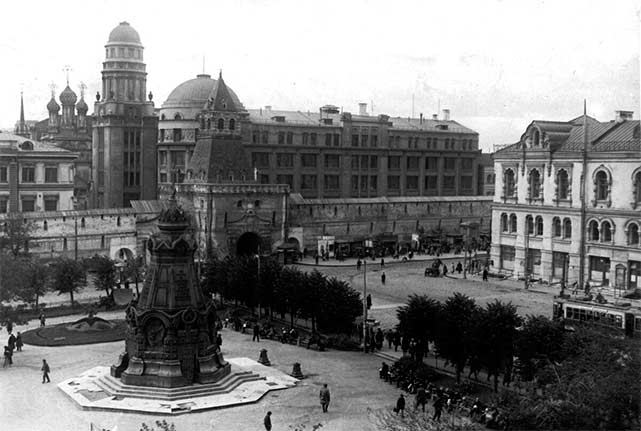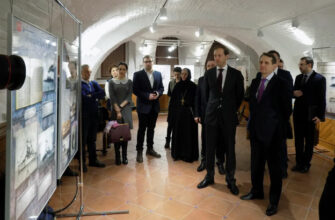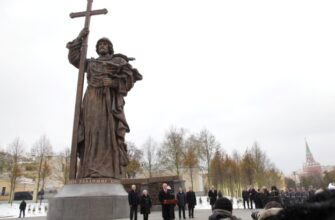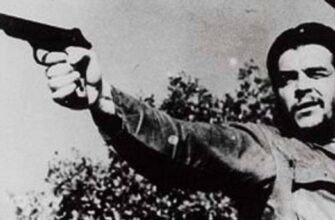Historically this place in heart of Moscow is part of Kitai Gorod (Citta City). Ilyinka street appeared in XIV because of residence of Crimean merchants selling silk, and was named in XVI after former Ilyinsky monastery (St. Elijah). Varvarka street arised as country road in XII century and got its name because of St.Barbara church. Loubyansky (earlier Kitaisky) passage in days of old was a place of fruit sale – part of Yablochnaya (or apple) square. In XIX the place became center of trade and industrial life of the country, in 1930s it suffered from profound restructuring, stopped in 1950s.
Now in small park of Moscow, between Ilyinka and Varvarka streets, Staraya Square and Loubyansky passage we see two monuments, bearing the united slavic ideas: memorial of Cyril and Methodius and Chapel of grenadier, died near Plevna.
The first monument dedicated to brothers from Thessaloniki St. Cyril (Konstantin) and Methodius, who creared in IX century the Slavic writing – Cyrillics, prepared the clergy of the Slavs for worship and sermons in the Slavic language, which, by its turn, was the addition of the Slavic variant of Byzantine culture. The seat of writing was the First Bulgarian Kingdom.
The monument was opened on May 24, 1992 on the Day of Slavic writing and culture. The auther is Vyacheslav Klykov (1939-2006) – outstanding Russian sculptor and patriot, who headed Orthodox- monarchist Union Of The Russian People and was President of The international Fund of Slavic writing and culture.

Yearly Days of Slavic writing and culture are held in Russia from 1991.
The second monument is Plevna monument in the current chapel, built in 1887 by grenadiers in memory of decade of the capture of Plevna on November 28, 1877 (during Russian-Turkish war of 1877-1878). The monument was built by V. Sherwood (1832 – 1897) – great Russian architect of English-Ukrainian origin, author of Historical museum built in forms of Russian architecture of XVI century.
From outside the chapel is decorated by zinc bas; under bronze cross, crowning the monument, there is Crescent ( a symbol of the victory of Orthodoxy over Islam). Originally the monument was gilted on cross, kokoshniks, on central boards and doors.
Russian-Turkish war of 1877-1878 was the final stage of the Russian-Turkish confrontation before a head of the First World War. During XVII-XIX centuries Russia held series of wars for freedom of Slavic or/and Orthodox peoples of Balkans. Upon the results of the last war, Romania, Serbia and Montenegro got their independence, and Bulgaria became self-government. Capture Of Plevna (Bulgaria), with great difficulty given to the Russian army, is responsible for the success of the military campaign. But military success was followed by diplomatic setback, and Russo-Turkish San Stefano Treaty was revised under pressure from Europe in Berlin.
Domestic result was political instability, expulsion of I.Aksakov from Moscow and abolition of Slavic society.




